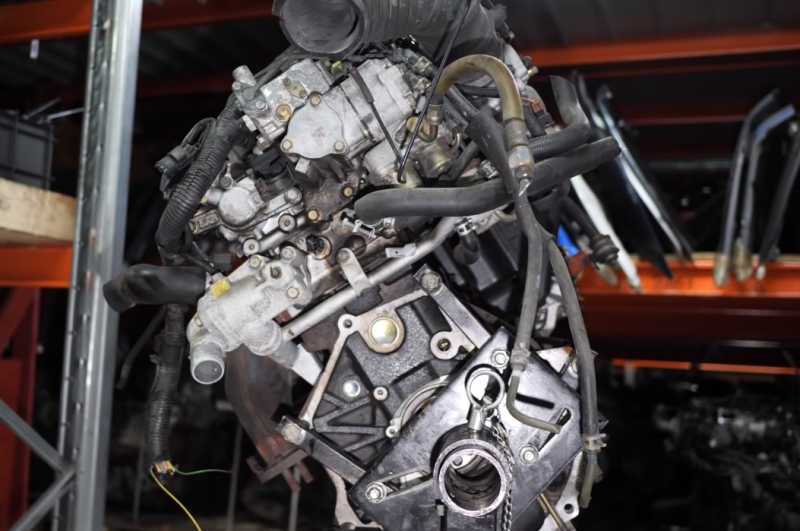Automakers assign different designations to their designs. Mitsubishi has GDI, VW has FSI, and Ford has the technology called Ecoboost. Toyota uses 4D, and Mercedes explains the concept of “direct injection” in the internal combustion engine index. What is the peculiarity of this technology, what are its advantages and disadvantages, we will discuss below.
How is GDI different from traditional engines?
In classic piston units, fuel enters the manifold, where it is mixed with air. In GDI, fuel is supplied directly to the cylinder. This method makes the combustion process more efficient because it provides precise control over the volume of gasoline and the timing of its injection.
The injectors are built into the cylinder head, fuel is sprayed into each combustion chamber, bypassing the intake manifold and valves. Fuel is supplied under pressure, which is provided by the injection pump.
How GDI works
Direct injection internal combustion engines have virtually the same design as conventional gasoline units. In such an engine, the cylinder is equipped with a nozzle and spark plugs. Fuel enters the chambers through the injection pump at a pressure of 5 MPa. The injectors operate in two fuel supply modes, depending on the driving dynamics of the vehicle.
Working with excessively lean mixtures - at low loads and quiet driving around the city or outside of it at speeds up to 120 km/h. Gasoline enters the cylinder chambers at the end of the compression stroke. The concentrated fuel cloud is located in the area of the spark plug and quickly ignites, igniting the lean fuel mixture. This allows the engine to operate optimally with a ratio of gasoline to air in the cylinder of 1 to 40.
 Fuel injection from an injector in a GDI engine. Photo: YouTube.com
Fuel injection from an injector in a GDI engine. Photo: YouTube.comThe second operating mode, or stoichiometric mixture, is carried out when driving at increased speed along the highway. Ignition occurs instantly and without difficulty. Gasoline is supplied during the intake stroke. The fuel enters the cylinders, is sprayed evenly, and then instantly evaporates, cooling the air in the working area of the engine. This process also reduces the likelihood of detonation.
GDI has one more, third mode of operation, controlled by the control system itself. It allows you to increase torque if the car is moving at low speeds and the driver sharply presses the gas pedal. When the unit operates in this mode and a sudden increase in the supply of an enriched mixture, the risk of detonation increases.
 Electronic throttle valve for GDI engine 4G93. Photo: YouTube.com
Electronic throttle valve for GDI engine 4G93. Photo: YouTube.comBut the control unit solves this problem. A small volume of gasoline enters the cylinder during the intake stroke. The latter is filled with a lean mixture in a ratio of 50 to 1 (air to fuel). There is no detonation. At the final stage of compression, a stream of gasoline is directed into the cylinder, establishing the proportion of air and fuel in an enriched mixture or equal to 10-12 to 1. This also eliminates the possibility of detonation.
Advantages and disadvantages of GDI engines
The main advantage of such internal combustion engines is the efficiency of fuel supply. Thanks to precise control of gasoline injection into the engine cylinders, increased efficiency is achieved. GDI motors use incoming air more efficiently, resulting in increased power and better vehicle acceleration. Such units are more environmentally friendly.
But these are not all the advantages:
✅ Reliability and durability. Fuel is delivered directly to the cylinder and does not pass through the intake valves, eliminating the risk of deposits.
✅ Thanks to high pressure gasoline injection, it is possible to achieve more power without problems with detonation
✅ Improved response to the gas pedal. The car responds more sensitively to driver commands
✅ Increased power at high speeds: This provides improved dynamics when overtaking
✅ Efficiency at low loads
But this technology is not perfect. GDI has a number of disadvantages and vulnerabilities that should be considered. These engines are sensitive to fuel and the content of impurities and contaminants in it. Using low-quality gasoline can clog the injectors and damage the injection. This affects efficiency and increases the likelihood of breakdowns. Even small impurities can lead to contamination of the injectors, which will cause uneven distribution of fuel among the cylinders and reduce engine performance.
 Soot and oil deposits in a GDI engine. Photo: YouTube.com
Soot and oil deposits in a GDI engine. Photo: YouTube.comRegular use of cheap gasoline in GDI engines increases the risk of burning. GDI engines are more expensive to maintain and repair than traditional injection systems due to their complex design. Elevated exhaust gas temperatures can affect the longevity of the catalyst and other exhaust components. Cars with GDI engines are more expensive compared to similar models with traditional injection.
Features of care and prevention
Maintaining the smooth operation of engines with GDI involves a number of preventive measures. Of course, this means choosing only high-quality fuel, regularly replacing consumables, and using oils recommended by the manufacturer. But it also requires systematic cleaning of the intake from deposits, scale, dirt from valves, throttle valves and other components.
 Ignition coil for Mitsubishi 1.8 GDI engine (4G93). Photo: YouTube.com
Ignition coil for Mitsubishi 1.8 GDI engine (4G93). Photo: YouTube.comAssessing the condition of the injectors, fuel pressure and electronic control system performance is part of maintaining engine health. Avoid prolonged idling to reduce gas pollution and the risk of scale formation in the cylinders.
Buy a contract one or repair it: which is more profitable?
It all depends on the nature of the breakdown and the specific case. Let's look at the example of the Mitsubishi Carisma. The cost of a contract 1.8 liter GDI engine (used, brought from a foreign dismantling facility) is about 50-60 thousand rubles. The same used engine, removed from a car operating in the Russian Federation, will cost 25-30 thousand rubles. The capital cost of such an internal combustion engine in one of the Mitsubishi technical centers in Moscow ranges from 55 to 250 thousand rubles.
Among other types of internal combustion engines, the GDI engine is distinguished by its direct fuel injection method. This type provides efficient fuel consumption, which leads to increased efficiency. When choosing a car with such an internal combustion engine, you need to take into account the features of maintenance and repair, your individual needs (driving style, type of trips). Manufacturers offer different GDIs, some of which are more reliable and durable. To make an informed decision, we recommend studying owner reviews and expert opinions about a specific make and model of car.










